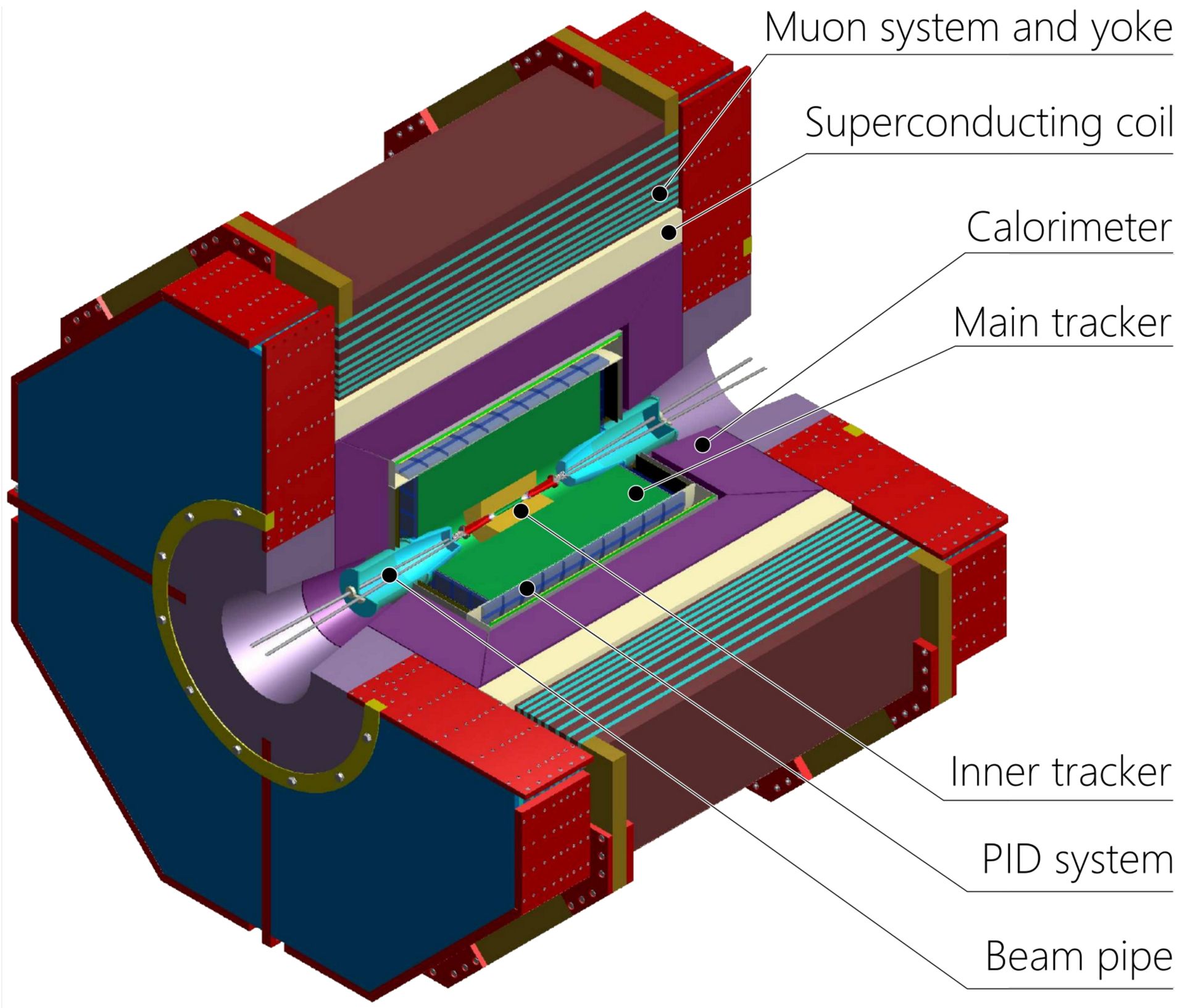SCT Detector
A universal particle detector surrounds the beams collision area. Its purpose is detecting particles produced in \(e^+e^-\) collisions and measuring their properties. The principles for detecting charged and neutral particles differ, and are based on different types of interaction with the detector medium.
The trajectory of a charged particle is measured in the tracking system by detecting the medium ionization produced by the particle. The trajectory of a charged particle in a magnetic field is a helix with a curvature that depends on the particle momentum. An axial uniform magnetic field of \(1.5\ \mathrm{T}\) is mainained in the tracking system volume allowing the particle momentum to be measured.
An important task is determination of the type of charged particle passing through the detector. There are five options: electron, muon, charged \(\pi\) or \(K\) mesons, and proton. All other charged particles decay before reaching the detector. The particle identification (PID) system is devoted to this task.
Neutral particles reaching the detector (photons and neutrons) do not produce ionization and do not interact with magnetic field. Energy is the only parameter that can be measured in this case. This is done using the electromagnetic calorimeter. A particle entering the calorimeter produces an electromagnetic shower — a cascade of secondary electrons and photons. Primary electrons and photons transfer all its energy to shower, so that their energy can be measured via detection of the secondary (shower) photons.
Requirements to meet
The SCT physics program imposes the following requirements on the SCT detector:
- Momentum resolution for charged particles better then \(0.3\%\)
- Energy resolution for neutral particles better then \(1.5\%\)
- Hermiticity of at least 95% of the full solid angle
- Reconstruction of soft tracks with a transverse momentum from 50 MeV
- Excellent charged particle identification, including \(\pi\)/\(\mu\) separation
- Good \(\gamma\)/\(\pi^0\) separation in the energy range from 10 MeV to 3000 MeV
- Data acquisition rate of 300 kHz @ \(J/\psi\) peak
The listed requirements correspond to a state-of-the-art particle detector. All detector subsystems, if well designed and working in concert, should constitute a detector that meets the requirements.
